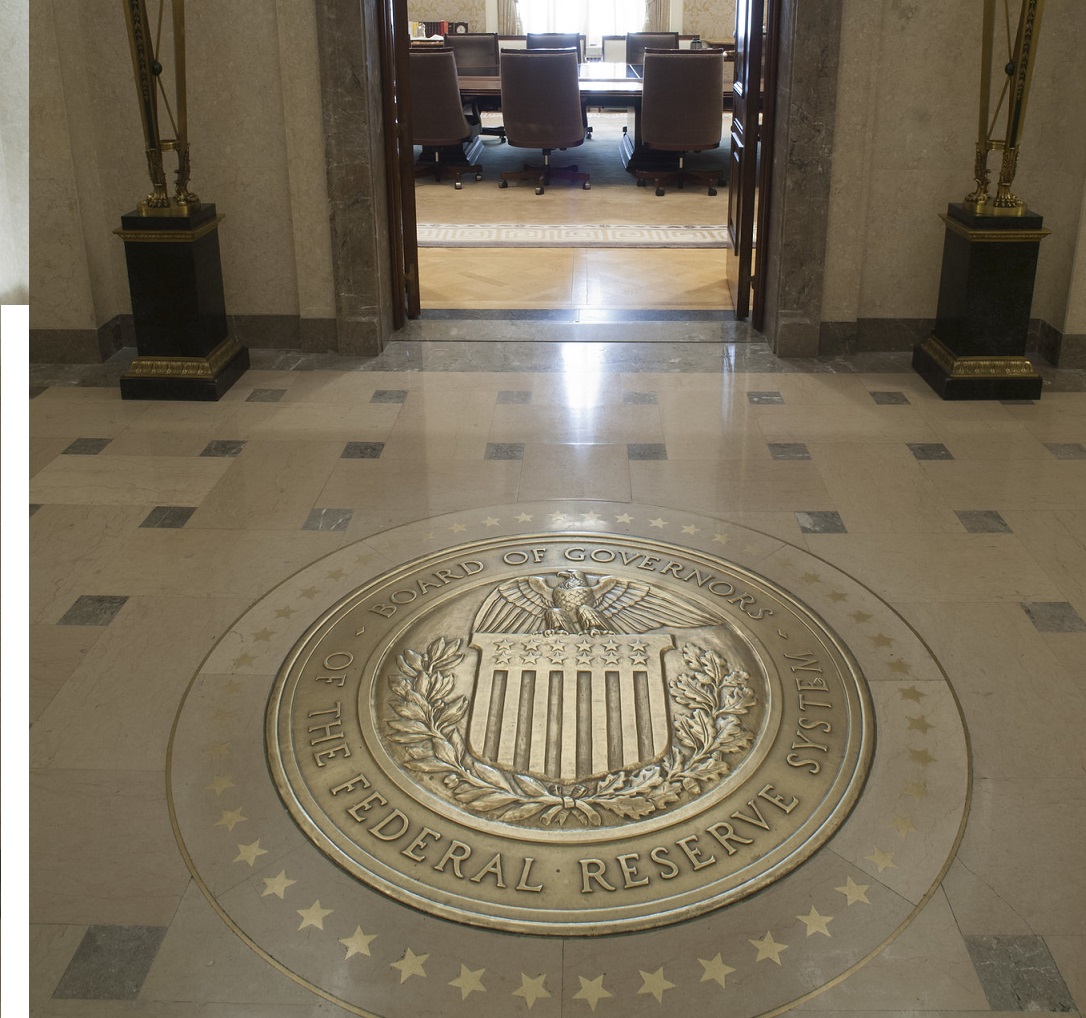by Liz Ann Sonders, Jeffey Kleintop, Kathy Jones, and Kevin Gordon, Charles Schwab & Company Ltd.
Could the economy slow faster than expected? Some investors have begun to worry that the spread of the COVID-19 delta variant and the drying up of fiscal and monetary stimulus could put the brakes on economic growth.
Although the growth rate may slow, U.S. economic growth remains high on level terms, and in our view that is likely to continue. However, this year’s swings between cyclicals and defensives, value and growth, and international and U.S. stocks exemplify the importance of holding a diversified portfolio to help reduce overall portfolio volatility.
U.S. stocks and economy: Growth versus growth rate
Amid the rapid spread of the COVID-19 delta variant and a significant easing in both monetary and fiscal stimulus, investors have begun to worry about a faster-than-expected economic slowdown. As we have pointed out before, the second quarter likely will mark the peak for the growth rate in several key metrics—most notably, earnings and gross domestic product (GDP)—but that doesn’t mean peak growth in level terms.
Some fears should be quelled as supply constraints ease across several industries. An increase in prices has put upward pressure on overall inflation metrics, but many areas (such as used-car and commodity prices) have cooled, signaling a possible light at the end of the tunnel in terms of pricing stress.
Growth rates peaking in the near term doesn’t suggest that the economic backdrop will sour quickly. Demand remains solid. As shown below, the new-orders components within the Institute for Supply Management (ISM)’s manufacturing and services indices are still very elevated and comfortably above 50 (the level that separates expansion from contraction).
Demand remains strong despite weakness in hiring

Source: Charles Schwab, Bloomberg, as of 6/30/2021.
The employment components contracted in June, which bears watching. However, the weakness is likely tied to several factors affecting the labor market, including some workers’ virus-related fears of returning to the workplace and their lack of child care. Thus, the employment situation should improve if demand remains strong—but if it were to worsen, that would raise a red flag for the economy.
Given the resurfacing of some economic anxiety, investors have piled back into defensive areas of the market. Importantly, the defensive plays over the past year were not the classic sectors like Utilities or Consumer Staples. Instead, the COVID-19 era “defensives” were Information Technology, Consumer Discretionary, and Communication Services. As shown below, the Utilities and Consumer Staples sectors remain the worst performers since last November (when the market shifted toward cyclical- and value-oriented areas). Even since mid-May, when investors started to take more of a risk-off posture, they remain in negative territory.
Investors have shifted to defensive and growth-oriented areas lately

Source: Charles Schwab, Bloomberg, as of 7/15/2021. Indexes are unmanaged, do not incur management fees, costs and expenses and cannot be invested in directly. Past performance is no guarantee of future results.
Despite growth-oriented sectors recently retaking the reins, certain value factors continue to outperform certain growth factors. As seen below, using high free cash flow yield as a proxy for value and high five-year estimated earnings growth as a proxy for growth, value is outperforming growth considerably year-to-date. That contrasts with the outperformance of the S&P 500 Growth Index relative to the S&P 500 Value Index.
Value index is underperforming but value factor is outperforming

Source: Charles Schwab, Bloomberg, Cornerstone Macro, as of 7/15/2021. Factors based on sector-neutral S&P 500. Free cash flow yield is defined as the last twelve months of free cash flow divided by the share price. Long-term growth is defined as mean estimated five-year earnings per share growth. Past performance is no guarantee of future results.
The stark disparity underscores the notion that a strategy emphasizing the factor(s) of value (as opposed to value-labeled indices) has continued to work well this year—even in traditional growth areas like Information Technology and Communication Services. Given that unique mix, we still favor a hybrid and disciplined approach to factors. Additionally, shifts in leadership among sectors remain swift and large; and with economic momentum likely slowing from here, we continue to encourage diversification among sectors and periodic rebalancing.
Global stocks and economy: Delta hedging
Concerns of a resurgence of the coronavirus have been building over the past month and are being reflected in markets’ performance. While the global economy and corporate earnings look strong—even prompting the Federal Reserve to “think about thinking about” tapering economic stimulus in the U.S.—the spread of the delta COVID-19 variant and its potential to cause an economic slowdown has quickly become the biggest issue facing investors. Since early June, cyclical stocks have lagged defensives, reversing their leadership since the beginning of 2021. Leading on the downside have been travel, retail, and leisure stocks, industries that could suffer the most from a delayed economic reopening.
Should the highly transmissible delta variant continue to spread, global health experts are warning that indoor mask mandates and other public health measures may make a return this fall. Authorities in Australia, South Africa, and Asia have recently reintroduced measures to curb viral spread. France is warning its citizens against vacationing in Spain and Portugal. Japan just declared a state of emergency in Tokyo and banned spectators at the Olympics.
In the near term, the news may get worse. The fall and winter months may increase the spread of the delta variant, mirroring a typical seasonal virus pattern. The World Health Organization (WHO) has urged caution on re-openings, raising risks to growth. But longer term, vaccines are proving effective against the more severe effects of the delta variant, as you can see in the chart below. In the U.K., despite a rise in delta variant cases, we have not seen a comparable rise in deaths. This pattern has been attributed to high vaccination rates in the U.K. With fewer hospitalizations and deaths, renewed lockdowns may not be necessary.
COVID-19 cases versus deaths in the U.K.

Source: Charles Schwab, Bloomberg data as of 7/12/2021.
According to Israel’s Health Ministry, using real-world data, the Pfizer vaccine was 93% effective at preventing severe illness during an outbreak of the delta variant. In the chart below, the vaccine rollouts show no sign of slowing in parts of Asia and are making steady progress in Europe, though they have tapered in the United States and U.K. The outbreaks may encourage more people to get the vaccines.
Vaccinations on the rise

Source: Charles Schwab, Bloomberg data as of 7/8/2021.
With potential resistance to any renewed restrictions, influenced by both politics and lockdown fatigue, and supported by the effectiveness of vaccines against the delta variant, economic growth may remain solid. So, investors with different time horizons have been battling it out in the markets. While cyclical stocks have slid on these near-term concerns, those with a longer-term view may have an edge.
This year's swings between cyclicals and defensives, value and growth, and international U.S. stocks exemplify the importance of holding a diversified portfolio to help reduce overall portfolio volatility.
Fixed income: Slower but not weak
Treasury yields have nosedived in the past month, falling to the lowest level since February. With the economy growing at the fastest pace in decades, inflation up sharply, job growth soaring, and the Federal Reserve talking about pulling back from its bond buying program, the steep drop in yields has defied conventional wisdom. Why are bond yields falling if the economy is strong?
It looks to us like the market moves reflect the view that the peaks in growth and inflation in this cycle have passed and the prospect of tighter policy by the Fed would dampen the outlook for the economy. While we agree with that assessment longer term, we believe yields are now too low relative to the economic outlook and are likely to rebound later this year.
The rate of change in the economic indicators has cooled, although overall levels of activity are still strong. Retail sales, consumer sentiment, and housing activity have declined from high levels, while commodity prices have fallen, and the dollar has firmed up—all signs suggesting the factors pushing up inflation are set to ease. Inflation expectations have been declining. The 5yr/5yr forward breakeven rate, a measure of inflation expectations, peaked in early May at about 2.4% and has since fallen back toward 2%.
Market inflation expectations have been trending lower

Note: This is the 5-year, 5-year USD inflation swap rate. This rate is a common measure, which is used by central banks and dealers, to look at the market's future inflation expectations. The rate is calculated using the following formula: USD: 2*USSWIT10 Curncy - USSWIT5 Curncy.
Source: Bloomberg. USD Inflation Swap Forward 5Y5Y (FWISUS55 Index). Daily data as of 7/9/2021.
A slight shift in the Federal Reserve’s policy stance at its June meeting also contributed to the drop in yields. The committee’s median estimates for rates indicated that there might be two rate hikes in 2023, earlier than previously anticipated. In addition, various members of the Fed have been outspoken about wanting to reduce the pace of bond purchases sooner rather than later and move toward rate hikes as early as this year.
It may seem counterintuitive, but in the past, bond yields have fallen when the Fed has ended quantitative easing (QE). After the initial “taper tantrum” in 2013 which sent bond yields higher, they retreated when the actual process began. While tapering—or ending bond purchases—increases the supply that needs to be absorbed by the market, it also signals a step toward tighter policy, which can trigger slower growth and low inflation. The Treasury bond market is very sensitive to these signals from the Fed, and responded to the prospect of “less easy” policy by sending yields lower. This tendency appears to have been reinforced by the experience of the global financial crisis. The market absorbed the increased supply without a spike in yields.
The 10-year Treasury yield declined after the Fed ended each of its QE programs

Source: Bloomberg, using weekly data as of 7/9/2021. US Generic Govt 10 Yr (USGG10YR Index). Shaded areas represent the periods of quantitative easing. Past performance is no guarantee of future results.
Overall, we believe the market has gotten overextended once again. Ten-year Treasury yields at current levels appear too low relative to the economic outlook. The pace of economic growth and inflation are likely to ease in the second half of the year, but are starting from very high levels and will likely stay above the trends seen in the past decade. Moreover, real yields (those adjusted for inflation) are steeply negative and are unlikely to be sustained if the economy continues to make progress. We expect real yields to move up due to a combination of easing inflation expectations and rising nominal yields.
Near term, we expect 10-year Treasury yields to move in a range of about 1.2% to 1.5%, but see the potential for a move up to 1.75% to 2% later in the year.
Real yields remain deeply in negative territory

Source: Bloomberg. US Generic Govt TII 10 Yr (USGGT10Y INDEX) and US Generic Govt TII 5 Yr (USGGT05Y INDEX). Daily data as of 7/9/2021. Past performance is no guarantee of future results.
Senior Investment Research Specialist Kevin Gordon contributed to this report.
Copyright © Charles Schwab & Company Ltd.














